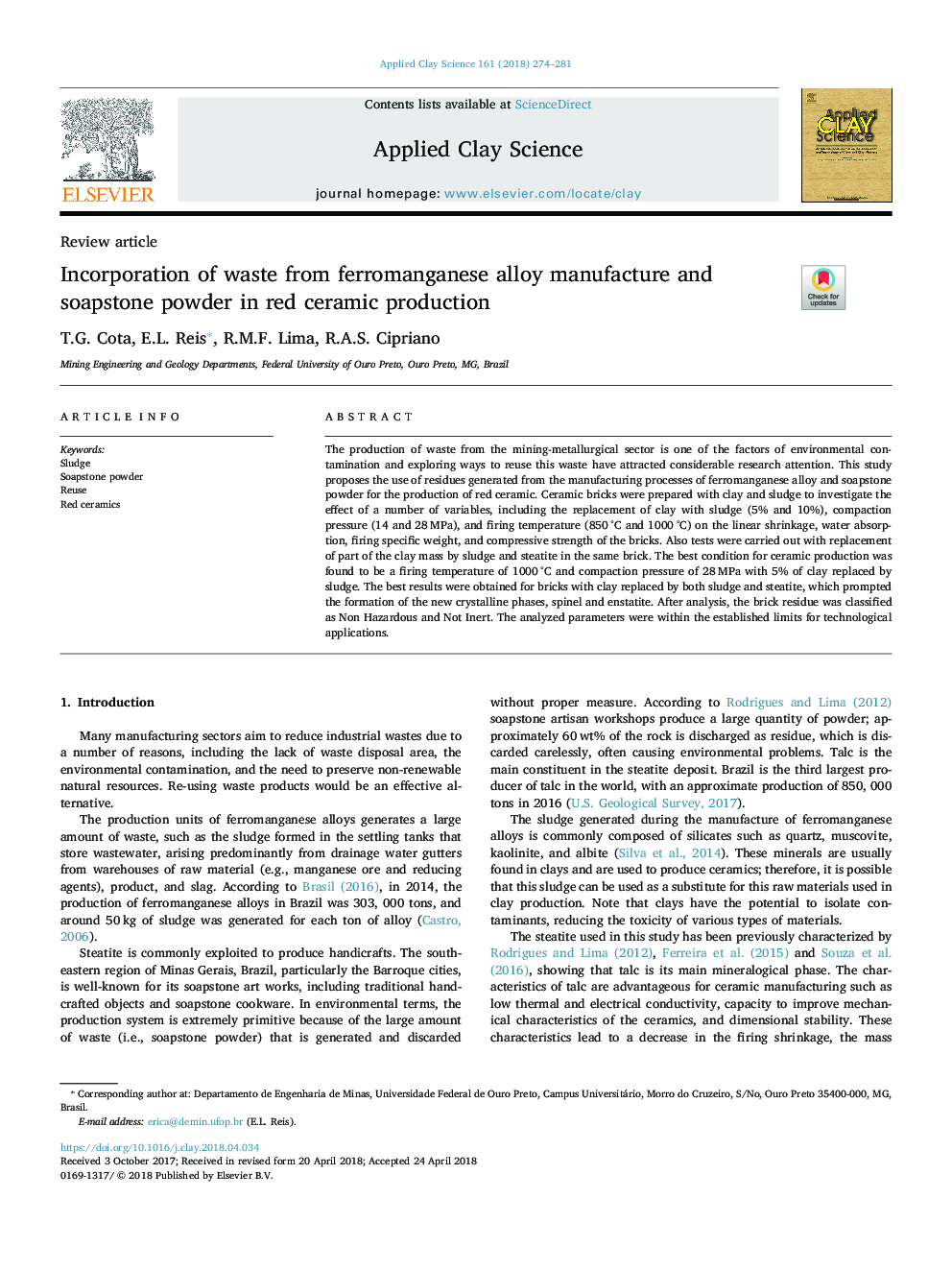| Article ID | Journal | Published Year | Pages | File Type |
|---|---|---|---|---|
| 8045675 | Applied Clay Science | 2018 | 8 Pages |
Abstract
The production of waste from the mining-metallurgical sector is one of the factors of environmental contamination and exploring ways to reuse this waste have attracted considerable research attention. This study proposes the use of residues generated from the manufacturing processes of ferromanganese alloy and soapstone powder for the production of red ceramic. Ceramic bricks were prepared with clay and sludge to investigate the effect of a number of variables, including the replacement of clay with sludge (5% and 10%), compaction pressure (14 and 28â¯MPa), and firing temperature (850â¯Â°C and 1000â¯Â°C) on the linear shrinkage, water absorption, firing specific weight, and compressive strength of the bricks. Also tests were carried out with replacement of part of the clay mass by sludge and steatite in the same brick. The best condition for ceramic production was found to be a firing temperature of 1000â¯Â°C and compaction pressure of 28â¯MPa with 5% of clay replaced by sludge. The best results were obtained for bricks with clay replaced by both sludge and steatite, which prompted the formation of the new crystalline phases, spinel and enstatite. After analysis, the brick residue was classified as Non Hazardous and Not Inert. The analyzed parameters were within the established limits for technological applications.
Keywords
Related Topics
Physical Sciences and Engineering
Earth and Planetary Sciences
Geochemistry and Petrology
Authors
T.G. Cota, E.L. Reis, R.M.F. Lima, R.A.S. Cipriano,
